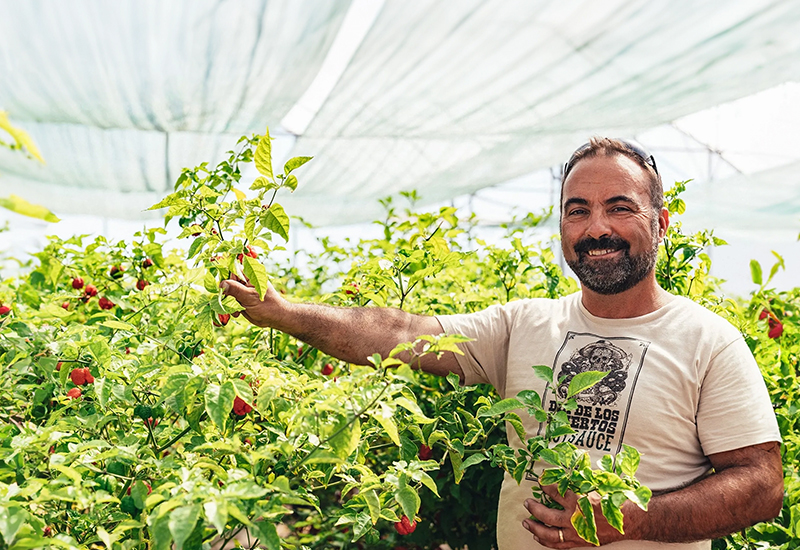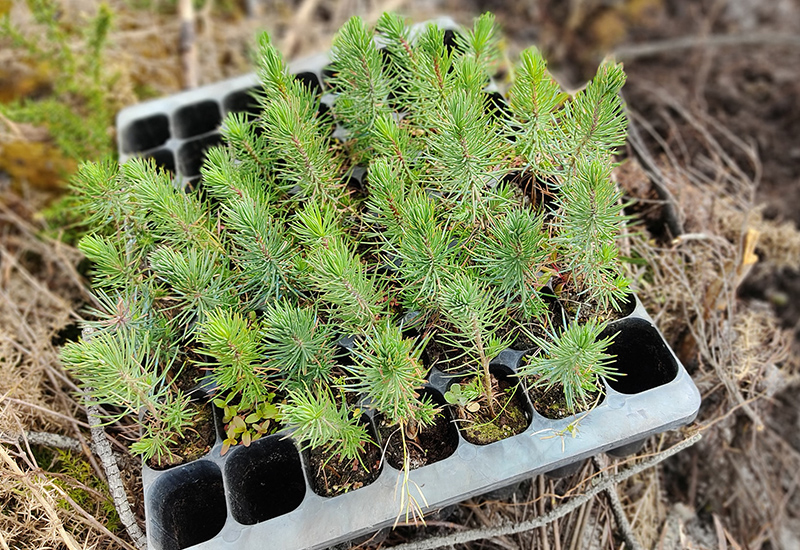When you have driven through Albufeira and come to a sign that says Quinta do Piri-Piri and the Jardim do Fogo, you know you have arrived. The Garden of Fire is appropriately named; it consists of two hectares of rows and rows of chilli peppers of many different varieties. At the entrance to the facility are the shop and a seating area for tasting, and access to the chilli garden. The owner and founder of the business, Romeu Santos, greeted us and explained how he started and how his operation has expanded into a thriving enterprise.
“I’ve always loved hot and spicy food,” explained Romeu. “It was in 2011, when I decided to plant some chilli pepper plants on our family land, right here. They grew well, so I experimented with several different varieties and wondered if there would be a market for them. I tried several large retailers and out of ten, seven bought my peppers. Immediately I saw an opportunity, but there was a problem. These retailers could not take enough quantity because their customers (understandably) would only buy small amounts. This was the catalyst that spurred me on to make bottled hot sauce. I began bottling in 2012.”
“Now we have over 150 varieties of peppers, down from 500 several years ago,” Santos continued. About 20 varieties are used in our list of sauces, while others are grown for the peppers and their seeds. Our first sauce was the Scorpion, whose ingredients were and still are: sunflower oil, malagueta, habanero, Trinidad scorpion and bhut jolokia. This is a medium hot sauce and we soon realised we needed sauces of different flavours and graduated heat levels.
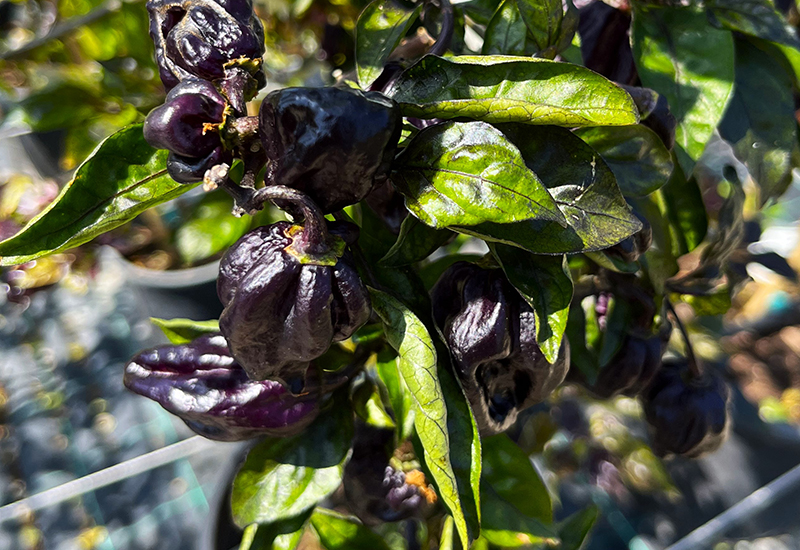
Yaki Blue Pepper
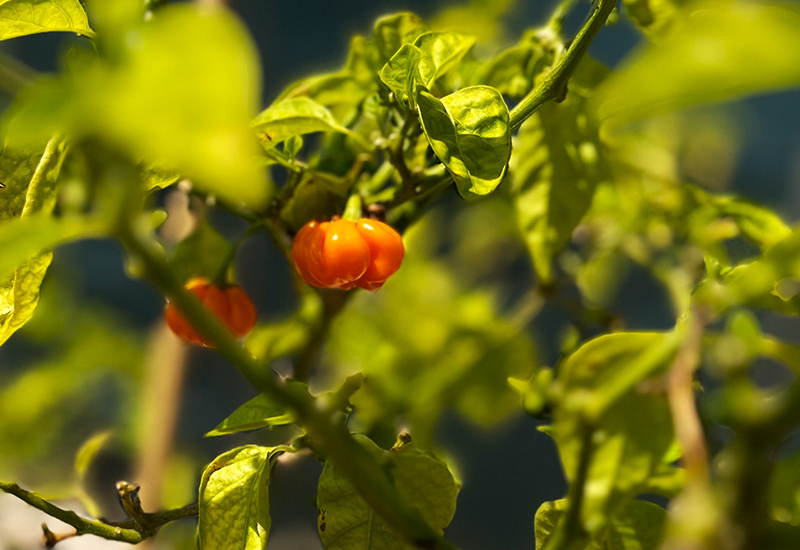
Scotch Bonnet (Jamaica)
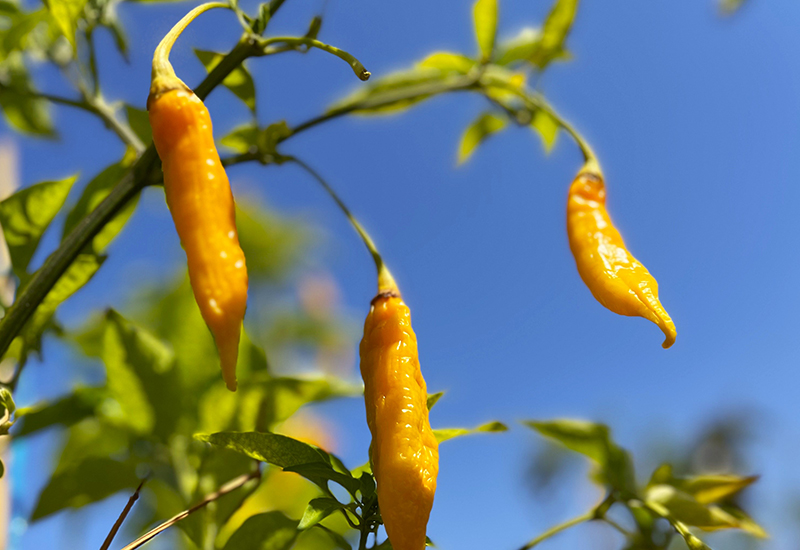
Burkina Yellow pepper
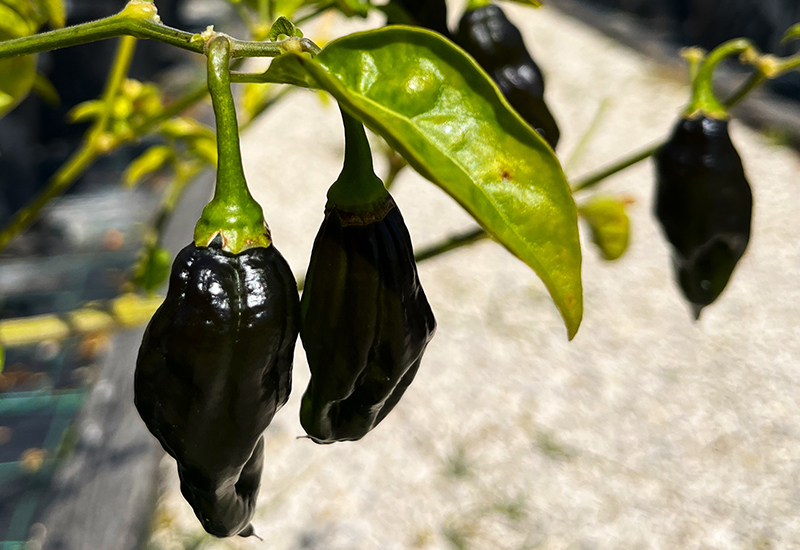
Black Pepper
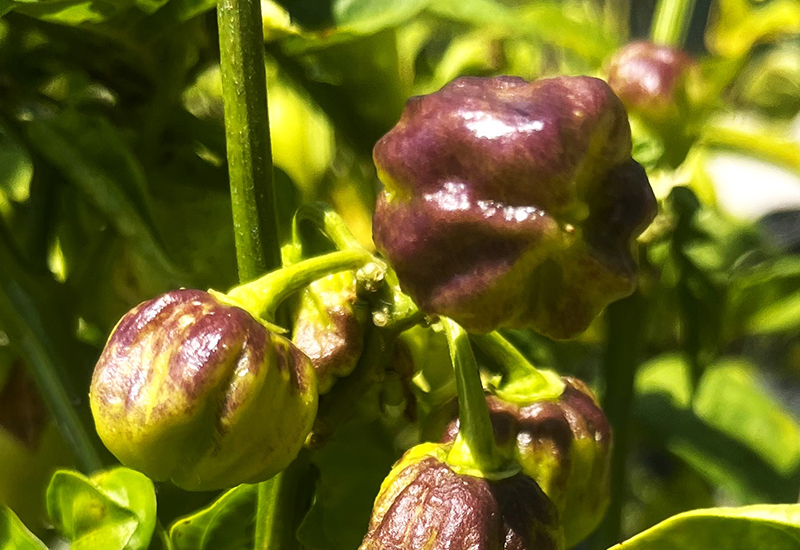
Pod Jonah
Peppers are graded on a scale known as the Scoville scale. On a scale of one to six, the Scorpion is a level three. Now there are ten standard sauces to choose from, of various strengths and flavours and there are eleven ‘specials’.”
Romeu was keen to point out that there are several specific piri-piri dishes that are identified with Portuguese cuisine. One is the bifana, a sliced pork sandwich liberally doused with piri-piri. The second is probably the best known, i.e. chicken piri-piri, and then there’s the hefty francesinha, an award-winning sandwich dish comprising sliced beef steak, ham, sausage and with an egg on top, then liberally drenched in a piri-piri sauce.
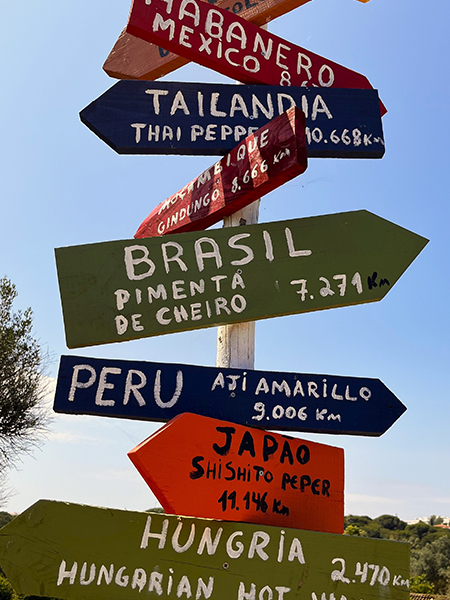
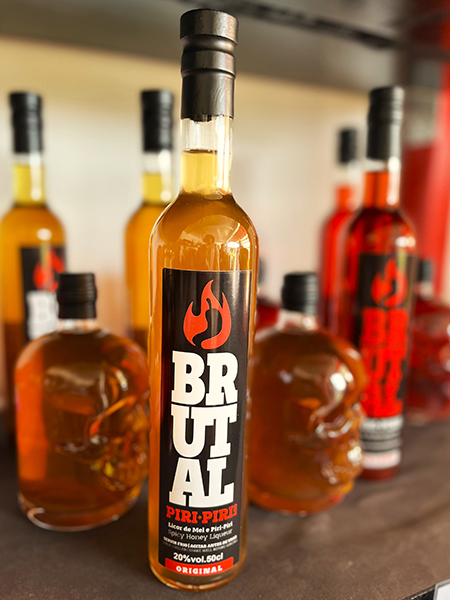
In the garden, we saw rows and rows of peppers: red, yellow, green, blue, black and purple. The peppers are picked, prepared and mixed with the other ingredients in a dedicated kitchen. A fermentation process begins before the mixture is either puréed or strained, depending on whether a thick or thin sauce is desired. Flavours can be adjusted before bottling.
The peppers in Romeu’s sauces include the biquinho from Brazil, the famous jalapeno (Scoville level 2) of Mexico, the ghost (level 5) pepper of India and the Carolina reaper (level 5). The chipotle is a smoked and dried jalapeno pepper essential in some of their recipes.
Besides sauces, Quinta do Piri-Piri has developed other products, including pastes and pickles, mustards, jams and liqueurs.
One of the liqueurs is ominously called Brutal. Romeu invited me to try it, along with two other guests who were visiting. Out came the Mexican sombreros – it’s a tradition. We toasted the ‘good life’ with trepidation but found the sweet nectar to be very palatable and not the fire-water we expected.
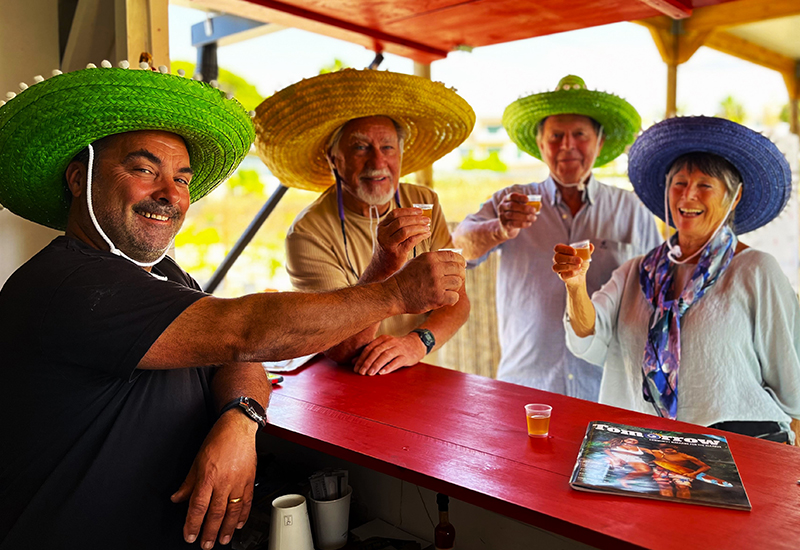
Visitors are invited to visit on Fridays and Saturdays. Romeu Santos is a jovial and accommodating host/guide and he has developed a Mexican theme to highlight the origin of the jalapeno pepper. (See sidebar).
“We love to see visitors for sample tastings and we’ve developed some fun activities to entertain our guests,” explained Romeu. “I describe my occupation as a ‘Labour of Love’.”
www.instagram.com/piripiri.co/
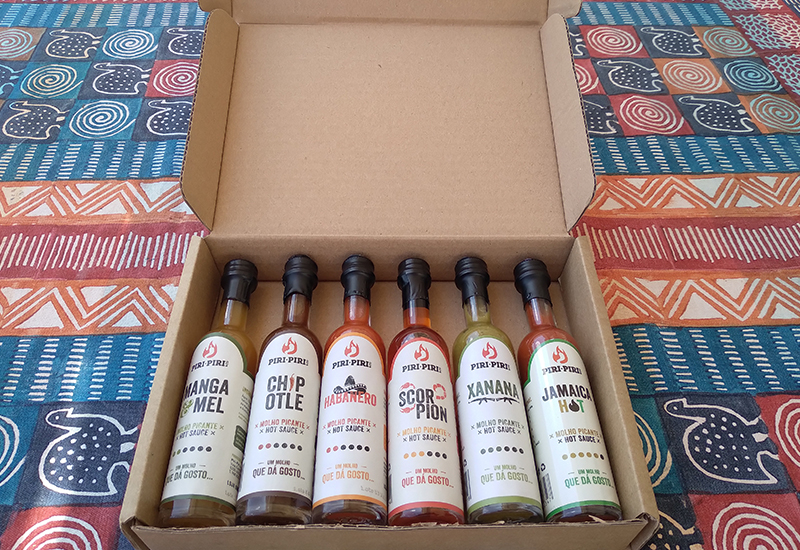
Piri-piri’s Journey
Piri-piri means ‘pepper pepper’ in Swahili, the mother tongue of several East African countries, including Mozambique, a former Portuguese colony. But chilli peppers originated in the Americas and were brought to Spain and Portugal in the wake of Christopher Columbus’ voyages.
The Portuguese initially had no use for the pungent peppers but eventually, they found their way to East Africa and to Asia, where the peppers became much more popular. The Portuguese empire actively encouraged settlers from the home country to migrate abroad, meaning that in Mozambique, there were large numbers of Portuguese settler-colonists. Both the indigenous peoples and the settlers incorporated the pepper into their food. Mozambique seems to be where the sauce first appeared.
Later, when Portuguese citizens returned to the homeland because of war, military coups or unsteady declarations of independence, they brought African influence and certain culinary creations with them. One such item was piri-piri.
Today, piri-piri is much-loved in African countries like Angola, several European countries as well as Britain, Canada, Australia, South Africa and others.
Piri-piri and its journey is an important historical reminder of how food can help us remember aspects of our own human history. Not only that, but piri- piri will certainly spice up your life.
